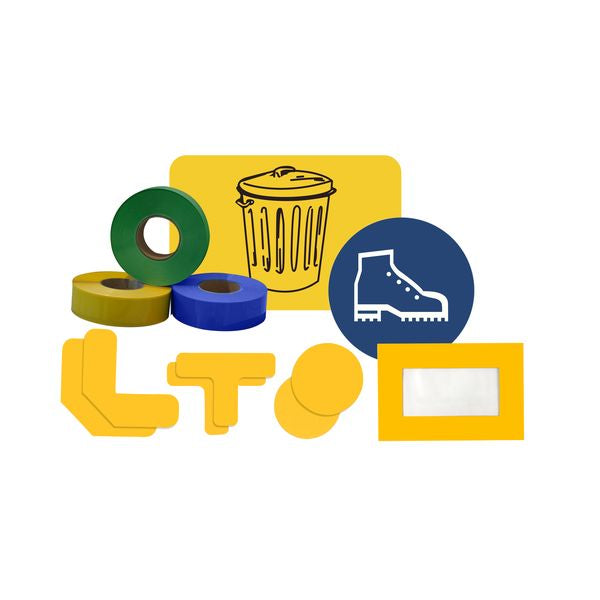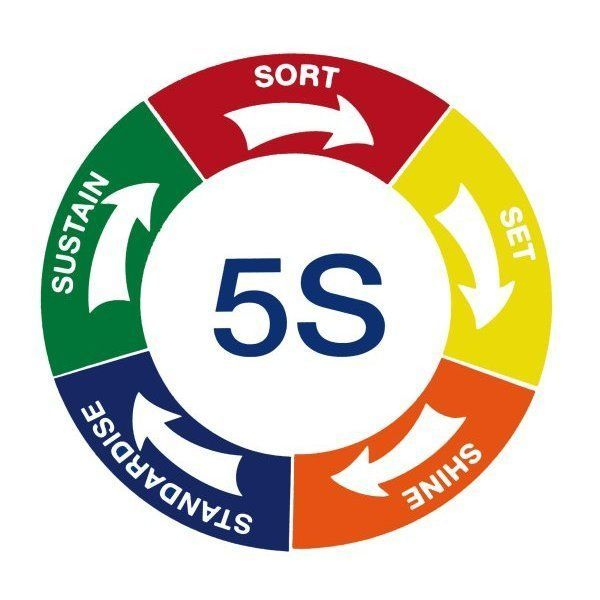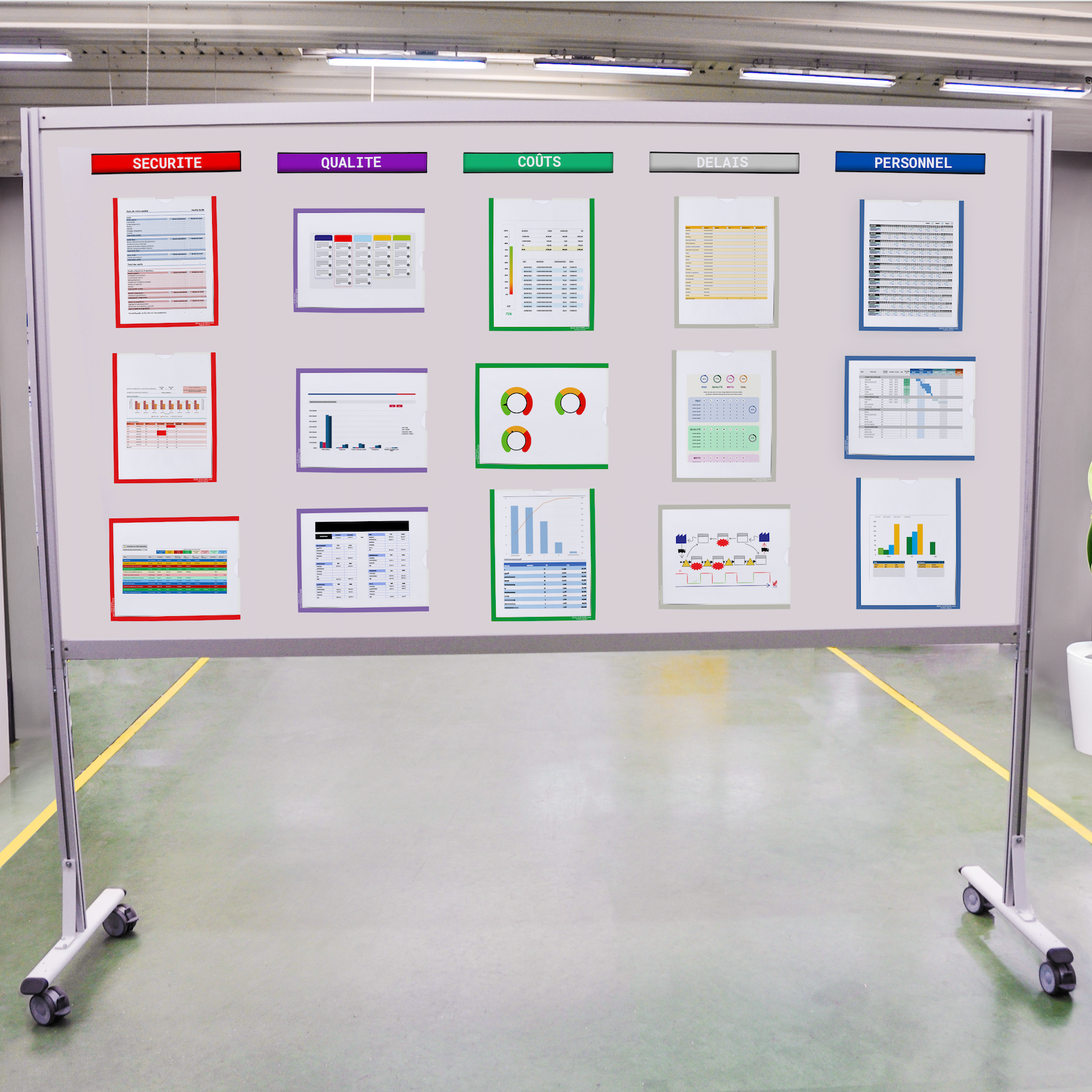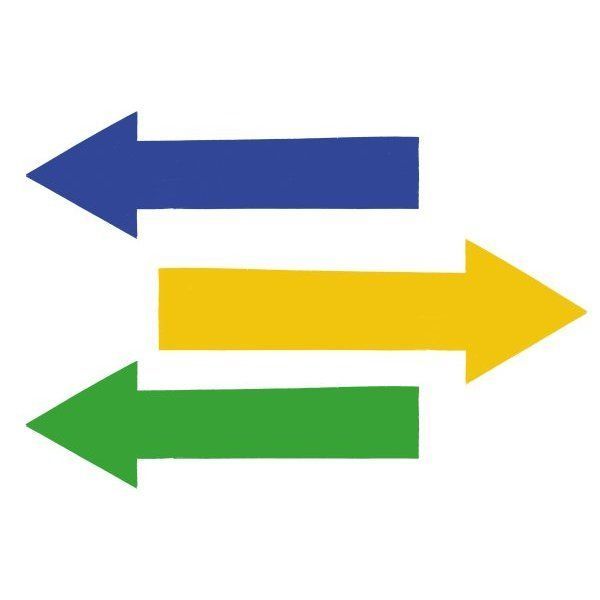Ensuring safety at work: an effective way to increase productivity and prevent workplace accidents
Ensuring safety at work: an effective way to increase productivity and prevent workplace accidents
DOWNLOAD THE INDUSTRIAL SAFETY CATALOGUE
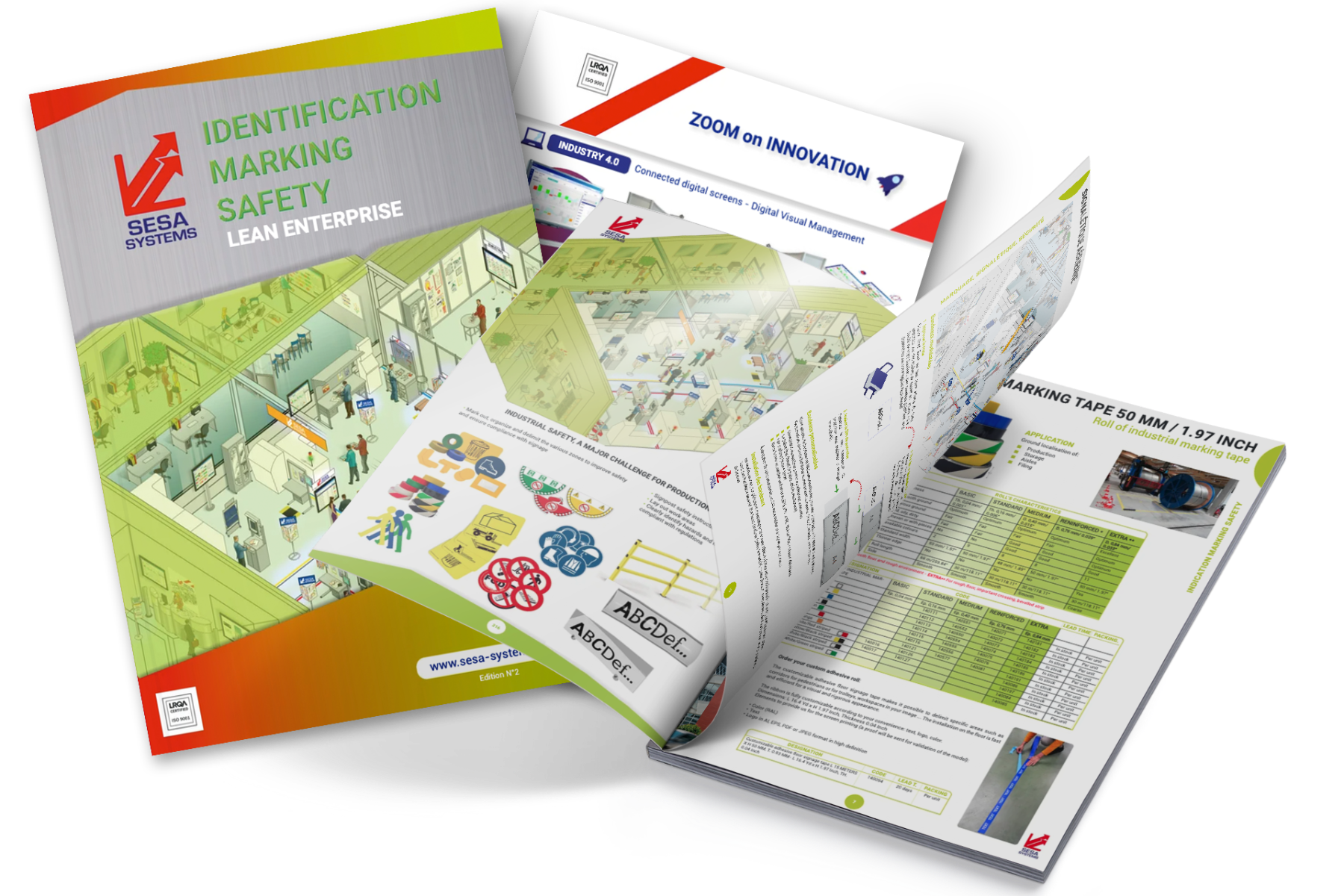
Occupational safety, or more broadly occupational health and safety, is an approach aimed at reducing or eliminating hazards, risks and harmful effects in the working environment. This approach requires multidisciplinary intervention by different actors and must be applied in accordance with legal regulations.

What is meant by safety at work?
Safety can be defined as "the ability of a system to function with an acceptable level of control of risks to people, property and the environment". The term "safety" covers a multitude of disciplines, all of which aim to eliminate or at least limit the harmful effects of human activities on humans and their environment.
The objective approach to safety is concerned with causes (security) and effects (safety).
From a methodological point of view, safety is a transversal approach, which can be found in complex engineering, in which Pareto's Law becomes a key tool. A distinction is sometimes made between passive safety (very much linked to the field of prevention) and active safety. These two notions complement each other, each being a factor of better safety: prevention, which aims to reduce the risk of occurrence, and protection ("active" safety) which will reduce the consequences if the harmful event occurs.
Security can be considered at individual or collective level, either as an objective (security objective), as a right (right to security), as a value (security is the first of freedoms), as a state of what is secured, as a function or activity that aims to secure an entity (political, legal, physical, human, intellectual, etc.) in the face of risks and/or threats (these two notions not being reducible to one another). Security therefore consists of guaranteeing the continuity of the company.
How to apply the security approach?
First of all, it is important to know that safety, and more specifically safety at work, is a legal obligation. Indeed, law n°91-1414 of 31 December 1991, applicable since 31 December 1992, obliges the employer to :
- Ensuring the health and safety of workers
- Implement the general principles of occupational risk prevention
- Conducting a risk assessment
This law has been supplemented since 2001 by a regulatory provision in the Labour Code. Indeed, the employer must also transcribe and update in a "single document" the results of the assessment of occupational risks identified in each work unit of the company or establishment, and make it available to the company's internal and external stakeholders. He is liable to criminal sanctions in the event of failure to do so. This document is therefore compulsory for all companies, regardless of size, workforce or activity. It concerns each work unit and must be updated at least every year. To complete this document, a multidisciplinary working group must be set up to review the various points.
Indeed, a construction site is usually a multidisciplinary group affair, where the addition of well-chosen skills allows for success. In general, a working group is made up of 8 to 10 people: the pilot, trained in the method to guide the group, people from the area concerned (team leaders, technicians, adjusters, operators, etc.), people from the support services (methods, HR, quality, logistics, R&D, etc.). Within the group, hierarchical levels are eliminated and everyone contributes to the common objective.

The principle of application
The safety approach is based on the principle that "all injuries and occupational diseases are preventable".
It is a philosophy and a way of looking at safety that implies that there is always something that can be done to prevent injuries.
Safety is just as important as production, costs and other business aspects for which the hierarchy is responsible. There is a need to condition oneself to notice the key elements of safety wherever one is.
The need to assess risks is not just a matter of statistics. The absence of an accident or occupational disease does not mean that there is no risk. Risk assessment requires anticipatory work to be carried out in the company to understand and analyse everything that may pose a risk to the safety and health of employees.
The risk assessment is the starting point for a prevention approach which aims to :
- Increase the health and safety of workers.
- Improve working conditions within the company.
It contributes, a fortiori, to the improvement of the general performance of the company.
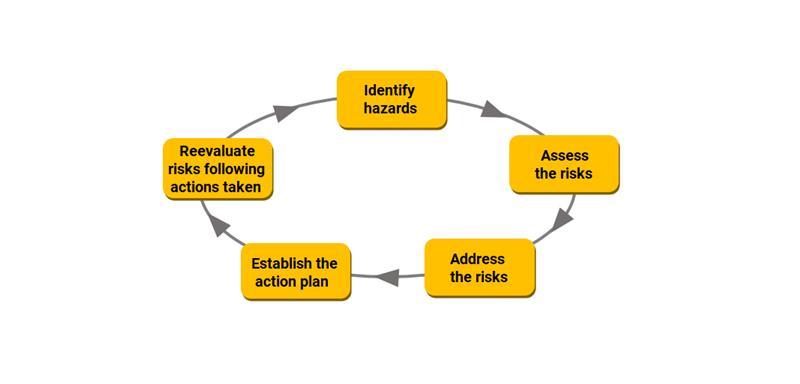
How to identify hazards, anomalies or risks?
Accidents do not happen by chance.
According to the ministerial circular of 18/04/2002, the danger is the intrinsic property or capacity of an equipment, a substance, a work method, to cause damage to health. The hazard is measurable and non-modifiable (e.g. the toxicity of a product), the damage is factual (e.g. burns, death).
The objective of this step is to make an inventory of all potential hazards, anomalies or risks inherent in the company's activity.
Before proceeding with this identification, the work unit must be delimited. This step is essential for carrying out the risk analysis. It requires consultation between the head of the company, the employees and their possible representatives.
The 5W (Who?, What?, Where?, When?, How?, How much? and Why?) method can be effective in covering all work situations. During this step, questions are asked, including on :
- The working environment
- Products and materials used
- The equipment
- Organisational methods
- Manufacturing processes
- The number of people potentially exposed (directly or not)
- The place of exposure
- Duration of exposure
- The circumstances of exposure
Subcontractors and external parties are also identified. For all workplaces and associated facilities, the activities are considered:
- Normal
- Abnormal (work, maintenance, relocation)
- Emergency (accidents, fire)
This stage is essential as it forms the basis for the analysis and the resulting action plan. A photo safari will make it easier to highlight and expose any risks, potential hazards or anomalies identified during this examination phase. To make it easier to deal with them, the anomalies found are noted directly on "anomaly reports".
The aim of these sheets is not only to locate, identify and trace anomalies with a view to correcting them quickly, but also to manage the resulting actions in terms of time, sector concerned, follow-up, etc.
The anomaly sheets are recorded and fed into an indicator on the improvement of efficiencies and the reduction of hazards and/or risks. This indicator gives the number of anomalies detected and resolved.
Risk analysis
Once the risks have been identified, they must be analysed. Risk analysis consists of assessing the level of exposure of employees to the hazards previously identified by understanding people's work (incidents, emergencies and malfunctions to be dealt with) and therefore measuring the potential for accidents and their consequences.
What will be assessed?
- The probability of occurrence of the accident or disease (frequency of exposure, duration, number of people involved, accident history).
- Severity: This is a question of determining whether the exposure to the risks has benign or serious consequences (care, injuries and consequences).
- Detection: Is the risk clearly identified or identifiable? Are there obvious safeguards in place? Are there procedures that specify what to do?
This ranking is subjective. There is no defined methodology. It is up to the employer to determine his or her ranking scale, which should ideally be the result of a consensus within the team involved in the process.
Risk management
The objective of the risk management and action plan is to implement a strategy to take appropriate preventive measures based on the results of the assessment.
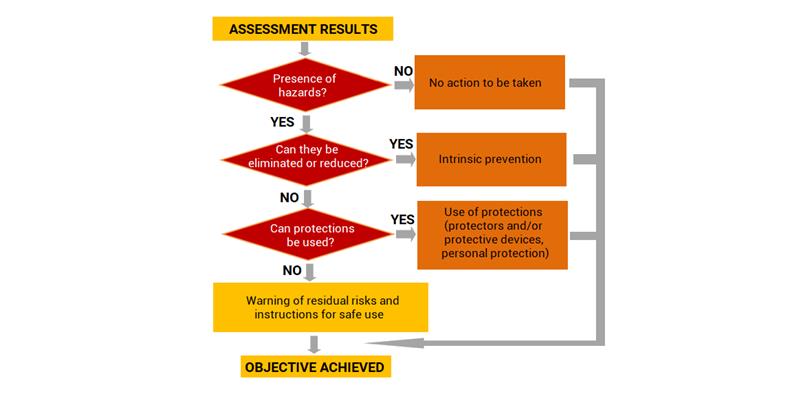
It is not a question of dealing with all the risks at once, but of starting by acting as a priority on the highest risks and planning the actions to be implemented.
Action should be taken in the following three directions (organisation, technical means, human means).
There are no precise rules for the presentation of this action plan. The system of "improvement proposal" sheets will be more visual. The improvement proposal sheet serves as a support for the ideas proposed during the risk analysis. Implementation is simple, quick and visual. Its self-carbonating sheet system allows for great flexibility of use.
Follow-up
Whatever action is envisaged, a person responsible for follow-up should be appointed. This phase consists of implementing and monitoring the actions proposed in the action plan and taking stock periodically.
"See together, know together, act together".
This follow-up must be visible to all, and everyone must be involved. In concrete terms, a simple, effective, easy-to-use and striking display should be set up, grouping relevant information in a space provided for this purpose. There are two ways of conceiving the monitoring of proposals:
- Follow-up by steps (issued, analysed, retained, completed)
- Follow-up according to the PDCA problem-solving method
The follow-up of improvement proposals must be systematic: a weekly meeting of the working group is essential to give the system momentum. The assessment of the actions allows :
- Validate the actions and methods implemented
- Correct actions whose technical and organisational contributions may generate other risks
- Reassess the risks regularly (at least once a year) and therefore finally update your single document.
- Re-assess the risks when major changes are made which have an impact on safety.
- Re-assess risks when new directives or information are issued that may have an impact on the health and safety of employees.
Each month, the manager of the sector concerned notes in his or her dashboard how many proposals for improvement have been noted and how many have been resolved. It is necessary to have steering tools (dashboards, indicators) to measure the effectiveness of the measures taken.
Safety Indicators
Safety in the workplace is one of the main areas of progress for management in the context of occupational risk prevention. It is on a daily basis and on the ground in each company that working conditions and behaviour are constructed. This vision must be shared by all, so that everyone contributes (at their own level) to achieving the objectives. At regular, predetermined intervals, progress is monitored using indicators defined at the same time as the objectives, evaluated and any deviations corrected. To identify risks visually on a production floor, Visual Management is generally used.
Below you will find an example of the application of safety indicators to set up or complete an efficient safety management in your company!


DOWNLOAD THE INDUSTRIAL SAFETY CATALOGUE
Optimize your processes and improve your performance !
Discover all the concrete applications, tools to implement as well as our advice on our areas of expertise.
Need more information?
Do not hesitate to contact us if you would like more information or customized support.
Our experts are at your disposal.

